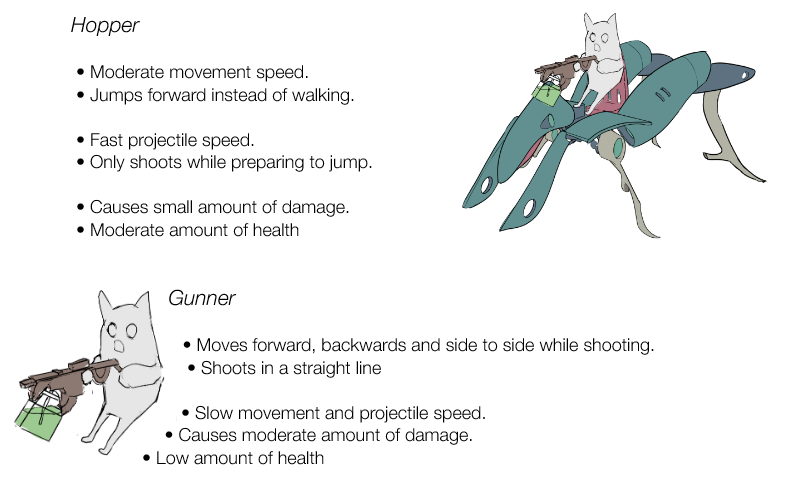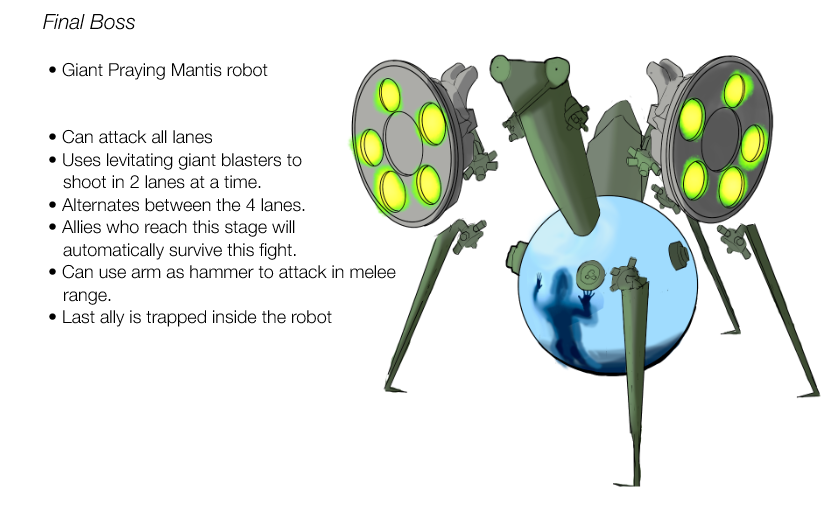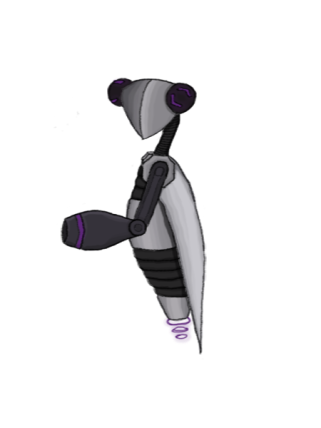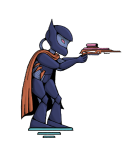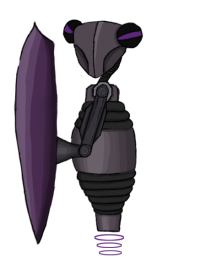Reasonings behind the character design of the basic enemy
|
In the original Friendship Down concept document, the envisioned enemy was an ‘alien race with intent to kill’ and is in the document shown as a mix of seemingly organic creatures and mechanical constructs (see image).
These were intended as different enemy types, featuring different movements and mechanics. However, when planning the project to fit the scope of the given assignment, and in particular to compensate for the group having only a single programmer, it was decided in pre-production that alterations were necessary: enemy types and behaviours required simplification, and the final boss would likely need to be cut. As an artist and designer, my role was to modify the basic enemy sprite in such a way that encapsulates and compresses the original creators’ vision. Additionally, the basic enemy sprite would ideally provide a basis for further development of other potential sprites (through for instance the recycling of a base model). The result is shown below.
The sprite attempts to merge all the aspects presented in the original document, adopting the size and role of the basic Gunner, the mechanical nature of the Hopper, and the anatomy of the Mantis Final Boss. The decision to make the enemy of the robotic kind was made for both visual and practical purposes. Having the enemies appear inorganic benefitted Friendship Down’s aesthetic goal of inspiring a sense of friendship and comradery; the dull, desaturated bots are in sharp contrast to the player character and their squad because these are humanoid, colourful, and organic (see image). This sets the player character and their crew apart from the other entities in the game, highlighting the unique bond between them. Practically, making the enemies robotic streamlines the development of additional enemy sprite assets further into production. Individual parts can plausibly be reused, repositioned, and used in varying proportion in order to create sprites that are visually similar to the others, yet communicate their functional difference clearly to the player. For instance, the basic enemy unit is a gunner, and as such features a simple cannon-arm. But if one should take the same model and increase size, alter colour, and move the wings on its back to the front, and a new type of enemy type arises: a defender unit, revolving around blocking the player’s attacks.
This approach is effective in the sense that it minimises the time spent on creating new assets from scratch, and does so while making the recycling of assets appear as a design choice, rather than a time-saving necessity; mechanical enemies would logically be constructed out of similar components, all with different functionalities based on their assembly. |
